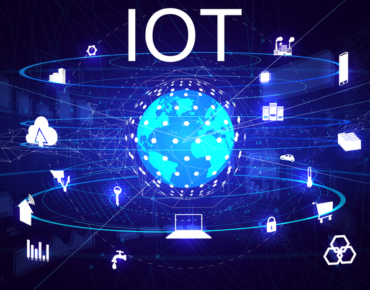AIoT and Edge Analytics: A Powerful Combination

The internet of things and AI are groundbreaking business technologies on their own, but when they are combined, their benefits are magnified for enterprise users. IoT connects devices together, giving and receiving signals like a nervous system, while AI acts as a brain, receiving data, processing it and using it to make informed decisions that control the overall system.
When joined together, they deliver intelligent, connected systems that can correct and heal themselves as needed — forming the Artificial Intelligence of Things (AIoT).
AIoT Can Automatically Take Actions
To appreciate the capabilities that AIoT can unleash, it is helpful to reflect on the impact IoT has already made on industry. With IoT technologies such as cloud computing and storage, as well as enhanced connectivity and machine-to-machine (M2M) communication, manufacturers have been able to complete three key tasks: connect machines, store data and make it meaningful. Now, as we introduce AIoT, they can benefit from a fourth capability — possessing the ability to act.
Now, manufacturers can be presented with more than just facts. Instead of only learning about how equipment is performing and then having to react with their own decisions on how to act upon those findings, AI is closing the loop by automatically taking actions for users.
However, to make AIoT feasible, manufacturers need a data management system that can support fast decision-making. While cloud storage is a viable option, analyzing data closer to its source — at the edge — will take AIoT to the next level.
Entering the Edge
In many cases of AI integration, activities need to occur locally to act fast. For example, if the AI system receives an alert about a machine fault, the AI system may make the decision to stop the machine to avoid product damage. By integrating the AI system at the edge instead of in the cloud, latency issues can be avoided, meaning the machine is switched off more quickly and fewer products are damaged.
The same is applicable for process optimization activities, such as changing the speed or type of movement by a machine. An AI system at the edge can send instructions to equipment to improve its performance faster than a similar instruction coming from the cloud.
An additional benefit of integrating AI and processing data at the edge is increased security. Cloud computing can present several security issues – through data stored by a third-party provider away from the company’s premises, and the accessibility of that corporate data over the internet. Edge computing can work as a complement to overcome these security concerns by filtering out sensitive information at the source and storing it on-premises, so there is less transfer of confidential material to the cloud.
Another use case where it is advantageous to integrate AIoT at the edge is when visual inspection systems are involved. Cameras and sensors create massive amounts of data, so it is more sensible to analyze and filter this data at the edge, instead of sending it all to an off-site cloud or to a large centralized system.
In addition, facilities often have many mobile devices connected to the AIoT, and then must deal with the accompanying huge amount of data that they generate. Sending this huge cache of data to the cloud may not be possible, so it is more efficient to conduct the analysis at the edge. Edge analytics can extract the higher-value features from the raw data, sending only the important and necessary information to the cloud, such as remaining machine lifetime estimates and more.
Integrating the AIoT
To integrate AIoT at the edge, industry leaders must first build an AI model offline. They must then train the model by using previously stored datasets to improve it and ensure it meets expectations and requirements. Once happy with the model, industry leaders can execute it by exporting and applying it online with new live data.
However, applying that model to real-time data in an online scenario is very different than testing it on stored data that has already been sorted in the training stage. Real-time data has not been filtered or categorized, and each set can be arriving at different times, creating a chaos of information for the AIoT.
Therefore, something needs to be done to the data before it can be used by the AIoT, and that is also where edge analytics come in. Edge analytics can harmonize data in different formats as it arrives from multiple sources. Data that is coming in at different times can be aligned on regular time boundaries to streamline the data before it reaches the AIoT.
Machine intelligence does hold great power, but other supporting technologies can help to uncover its fullest potential. Industry leaders who integrate the AIoT at the edge can directly and pointedly reap the benefits of a more efficient and reactive control system and gain the benefits of optimizing processes more quickly.
About the Author
 Johan Jonzon is CMO and co-founder of edge analytics vendor Crosser. With more than 10 years of experience, Jonzon leads the company's user interface (UI) design. Since 2012, Jonzon has focused on real-time communications and on the business and operational benefits that come with analyzing streaming data close to the data sources.
Johan Jonzon is CMO and co-founder of edge analytics vendor Crosser. With more than 10 years of experience, Jonzon leads the company's user interface (UI) design. Since 2012, Jonzon has focused on real-time communications and on the business and operational benefits that come with analyzing streaming data close to the data sources.











